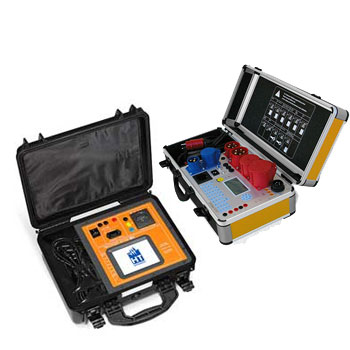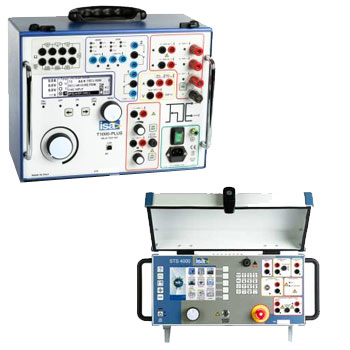The Huminator II offers the possibility to perform a rapid and
easy humidity calibration of measuring instruments, sensors
and data loggers of all manufacturers.
 Datasheet Datasheet
|
The EP-Z600 line of portable humidity generators have built in battery for up to 8 hours and a 7 inch touchscreen display.
- Touch screen display (7 inch)
- Battery for up to 8 hours work
- RS232/RS485/USB/LAN/WI-FI* support
- Rugged case
- Fast and stable control
 Datasheet Datasheet |
The EP-Z6000 line of humidity generators have a high capacity and uniformity and a 9 inch touchscreen display.
- Touch screen display (9 inch)
- Chart Recorder Door
- RS232/RS485/USB/LAN/WI-FI support
- 2 Liter Chamber Capacity
- Best Uniformity
 Datasheet Datasheet |
Compact, light weight humidity generator featuring quick-change desiccant and improved air flow.
- Quick Change Desiccant
- Spill Resistant
- Custom Probe Ports
- 8.4 kg
- ±1.0% r.H. or better
- 30cm (D) x 46 cm (W) x 16 cm (H)

Humidity Calibrators – precise RH & temperature verification for lab & field
Humidity calibrators generate controlled relative humidity and temperature conditions to calibrate hygrometers, RH/T probes, chilled-mirror dew-point references and transmitters. Depending on design they are available as portable humidity generators, laboratory climate chambers, dew-point calibrators or saturated salt solution kits—with options for automation and documentation.
Key capabilities (model-dependent): RH ranges typically 5…95 %RH, T ranges from −20…+80 °C (portable) up to +180 °C (specialized), stability in the 0.1…0.5 %RH class, improved uniformity via optimized airflow, traceable dew-point measurement, multi-channel logging, ramp/soak, USB/LAN and PDF/CSV export.
ICS Schneider Messtechnik supports selection, uncertainty budgeting, fixture/adapter design, procedure creation and provides factory/DAkkS calibration of your references.
FAQ on Humidity Calibrators
Answers on principles, accuracy, references, sampling, stability, salt solutions, dew point, software and best practices.
How do portable humidity generators differ from laboratory chambers?
Portable units are fast, compact and ideal for on-site checks of single probes. Chambers deliver better uniformity, larger volume and automated cycles for multiple DUTs.
What do stability, uniformity and accuracy mean for humidity?
Stability = temporal fluctuation at a point; uniformity = spatial evenness within the test volume; accuracy = deviation from the true value determined against a reference (e.g., chilled-mirror).
Which reference should I use for traceability?
Chilled-mirror dew-point hygrometers for lab-grade work; portable reference hygrometers with traceable certificates for field; optionally add a temperature reference for compensation.
How does temperature affect RH readings?
RH is temperature-dependent. Small temperature errors cause large RH errors. Keep sensor and reference isothermal and minimize heating/cooling gradients.
Which humidity generation principles exist?
Two-temperature/two-pressure generators for top accuracy, mixed/active humidity control for flexibility, and saturated salt solutions as simple fixed points.
When are saturated salt solutions appropriate?
For spot checks at defined RH fixed points (e.g., LiCl, MgCl₂, NaCl). Pros: low cost. Cons: long equilibration times and strong temperature dependence.
How long do stabilization and equilibration take?
Depending on chamber volume, target RH/T and sensor load: typically 5–45 min for portable units; larger chambers take longer for big setpoint steps. Always define a stability criterion (e.g., ΔRH/Δt).
How many probes can I test at once?
Several, but increased load raises stabilization time. Use proper feed-throughs/stoppers and avoid obstructing airflow.
What should I watch for with tubing/sample lines?
Use short, low-diffusion lines (PTFE/PEEK), minimize dead volume, insulate against condensation and insert probes to a repeatable depth.
How do I calibrate dew-point transmitters?
Set the generator to a defined dew point, ensure isothermal conditions, allow adequate purge/settling time, compare against a chilled-mirror/reference hygrometer.
What does a practical point plan look like?
Example: 20/35/50/75/90 %RH at 23 °C plus 30/50/70 %RH at 10 °C and 40 °C, each with a defined stability window and up/down runs for hysteresis.
How do I build an uncertainty budget for RH?
Combine reference uncertainty, temperature error, stability, uniformity, drift, hysteresis, resolution and repeatability; report expanded with k=2.
How do I document in a compliant way?
Capture as-found/as-left, point lists, stability criteria, traceability chain, ambient data (T/RH), and expanded uncertainty; export PDF/CSV with signature/e-signature.
What maintenance is advisable?
Regular filter/humidifier service, check seals, recalibrate reference sensors, remove condensate, and keep firmware/software current.
How do I avoid condensation and leaks?
Avoid dew point above enclosure/line temperature, insulate, ramp slowly, test for tightness; use water traps at high RH.
Which fixtures/adapters help?
Sealed lids with O-rings, multi-probe holders, through-flow adapters for process probes and insertion sleeves for repeatable depth.
Which software features are useful?
Procedures, ramp/soak, multi-channel logging, TUR calculation, barcode/QR, audit trail, API/CSV export and reporting.
How often should I recalibrate?
Rule of thumb: annually; for critical QA or harsh environments consider semi-annual. After repair/transport perform an interim check.
What safety aspects apply?
Manage hot/cold zones, condensate and any compressed air/carrier gas; use PPE, open chambers de-pressurized and observe fluid/MSDS guidance.
Do you support selection, adapters & procedures?
Yes—we size the instrument/volume, define point plans, design adapters, prepare uncertainty budgets and supply factory/DAkkS certificates.















































































































































































